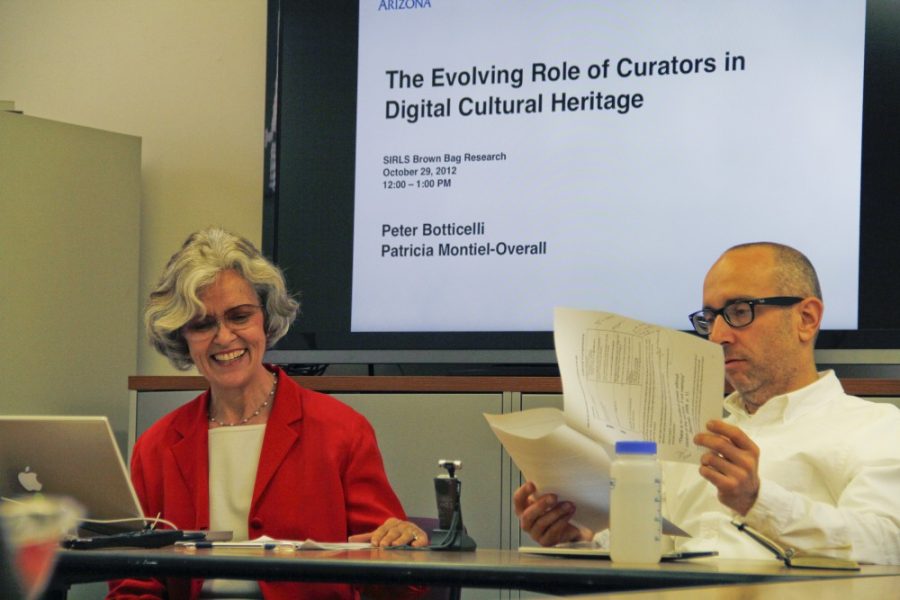According to researchers in the School of Information Resources and Library Science, just about everyone is a curator nowadays, thanks to social media and the Internet.
One of the school’s professors of practice, Peter Botticelli, and associate professor Patricia Montiel-Overall presented their work on Wednesday, which focused on what it means to digitize artifacts and make them discoverable and accessible online.
In the lecture, the two explained that “cultural heritage” is a catchall term for what libraries and archives are collecting.
Botticelli said that when he and Montiel-Overall looked at what’s happening within culture in general, they found that everyone is “curating” things.
“We’ve got all these interactive services that have sprung up that allow you to curate your collections of materials,” Botticelli said. “Things like Pinterest, Instagram, Flickr, Facebook; everybody has this idea that we are creating our own scrapbooks and our own sharing of information.”
Montiel-Overall defined the difference between a curator and archivist at the lecture, explaining that she and Botticelli were curators.
“Traditionally, a curator is a custodian of a museum collection and they have a domain knowledge about that collection,” Botticelli said. “The archivist is the record keeper. The term digital curator is basically creating and maintaining value to online stuff.”
Montiel-Overall added that curators are people who care about the collections.
Botticelli explained that while everyone is a curator one way or another, culturally competent curation involves enriching, correcting, widening and participating at a professional level with organizations such as museums.
The idea for the project came from Google Books, which allows users to search the website’s large database of books in electronic format. Part of Botticelli and Montiel-Overall’s research was looking into what projects were being done in Arizona in terms of digitization. Although Google Books took part in the mass digitization of artifacts like books, Botticelli and Montiel-Overall focused on small-scale projects such as digitizing artifacts and manuscripts, and found that 90,000 artifacts have been digitized in Arizona.
Botticelli also directs a graduate certificate program within the School of Information Resources and Library Science called DigIn, or Digital Information Management. Some interns from the program have gone on to work for the Arizona State Museum.
For future digitization projects, Botticelli said that plans are in store to figure out ways to determine the metadata, or data about various types of data, regarding items that become digitized. Additionally, if finances permit, future projects will research which items are not ideal for digitizing.









